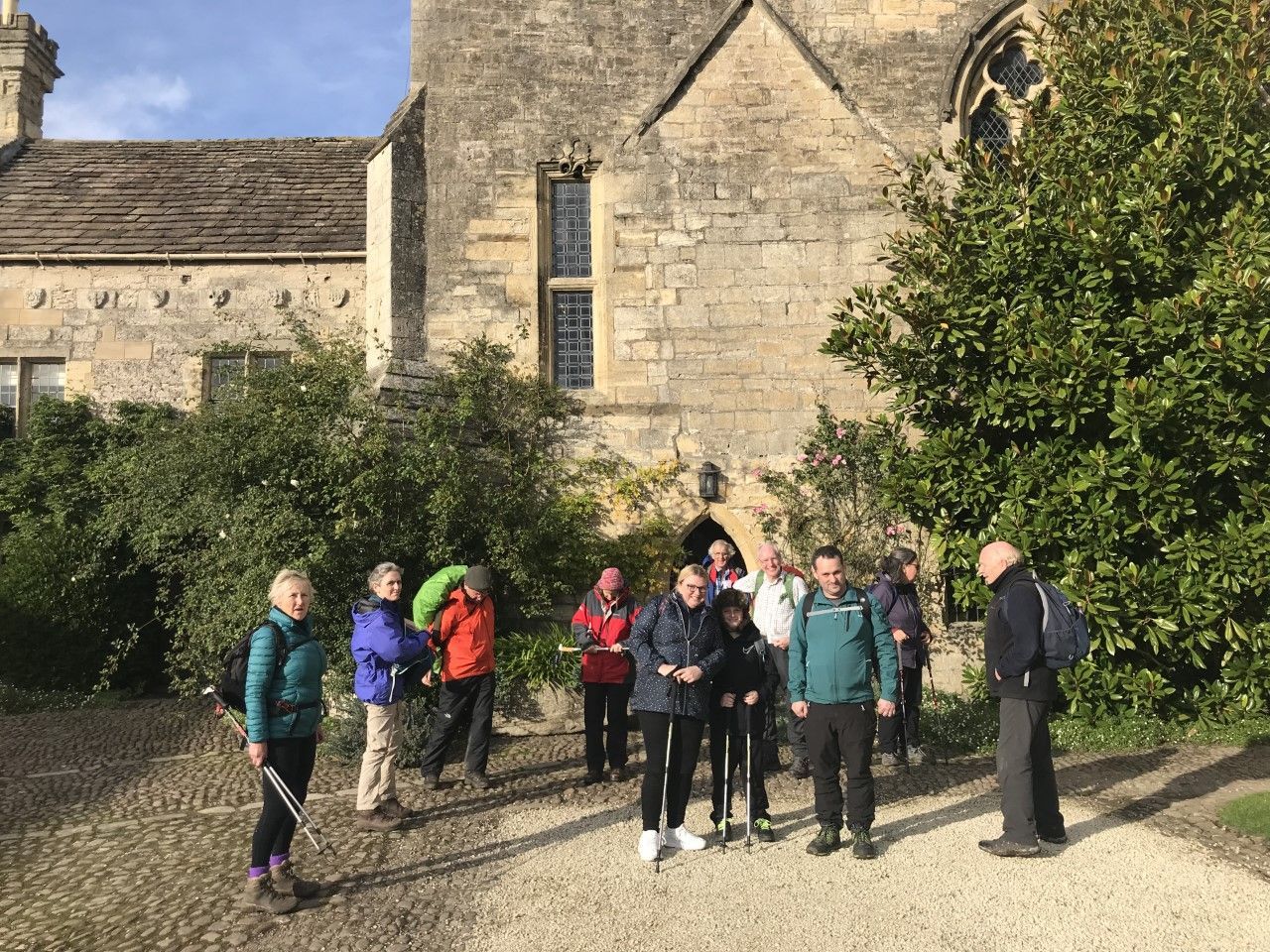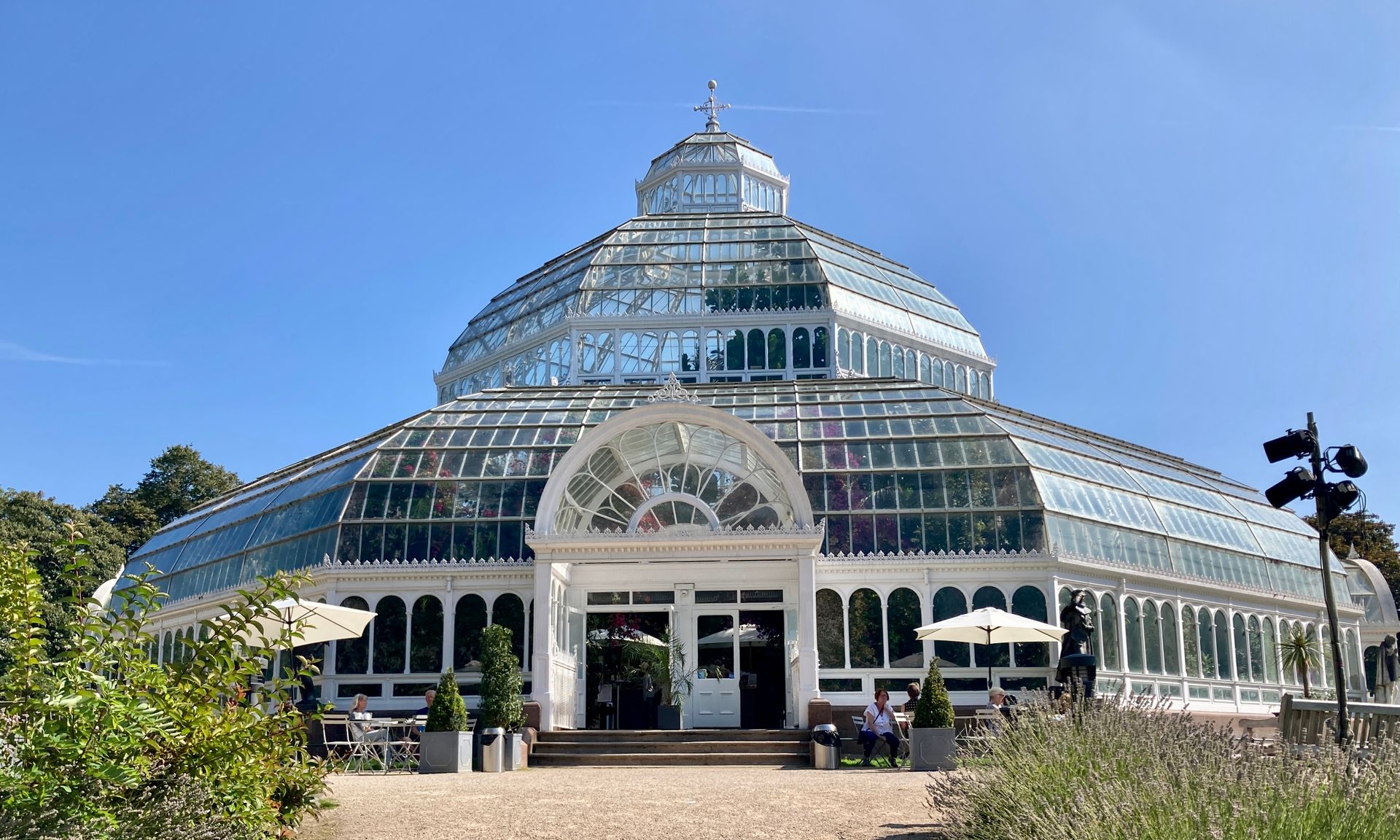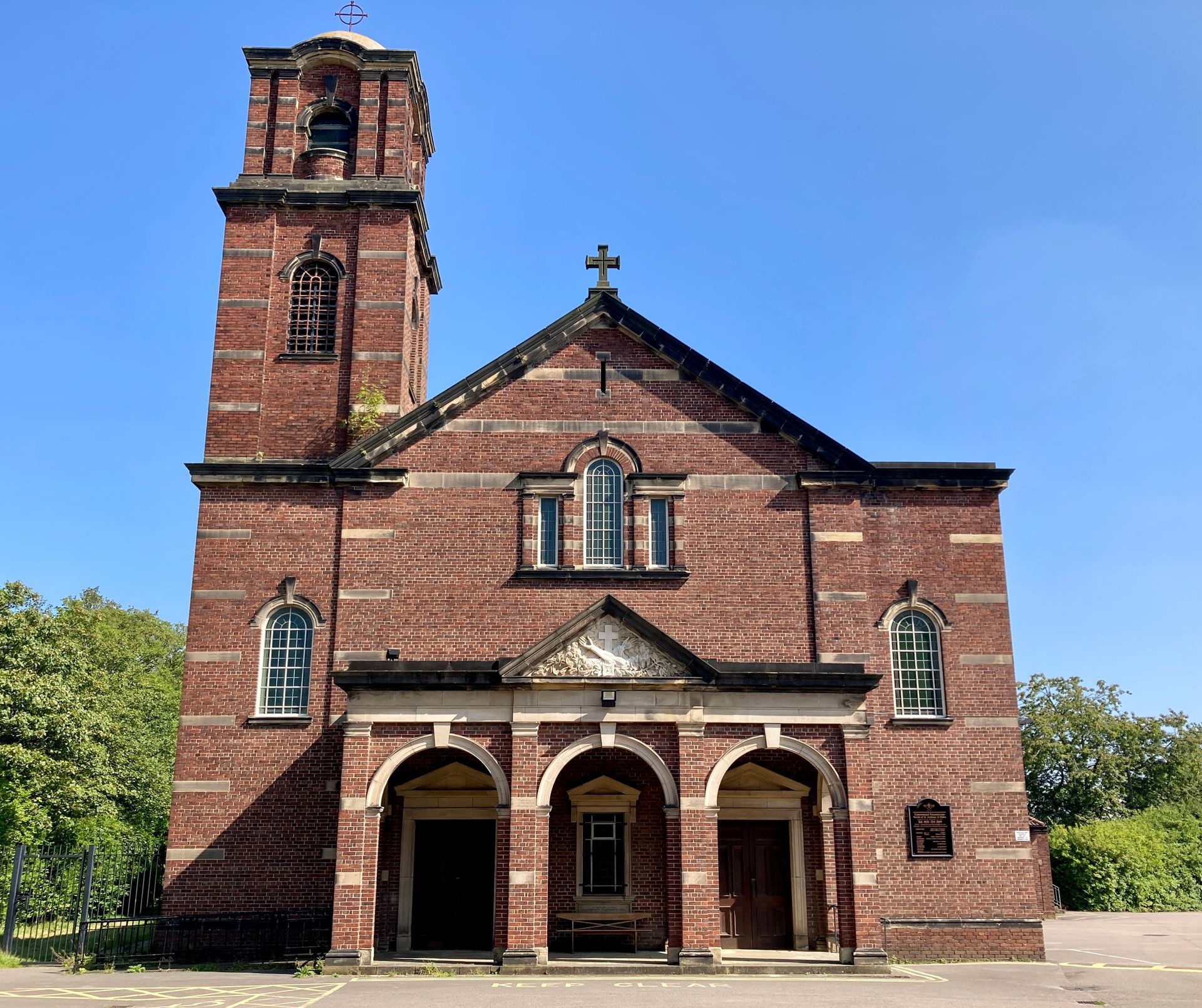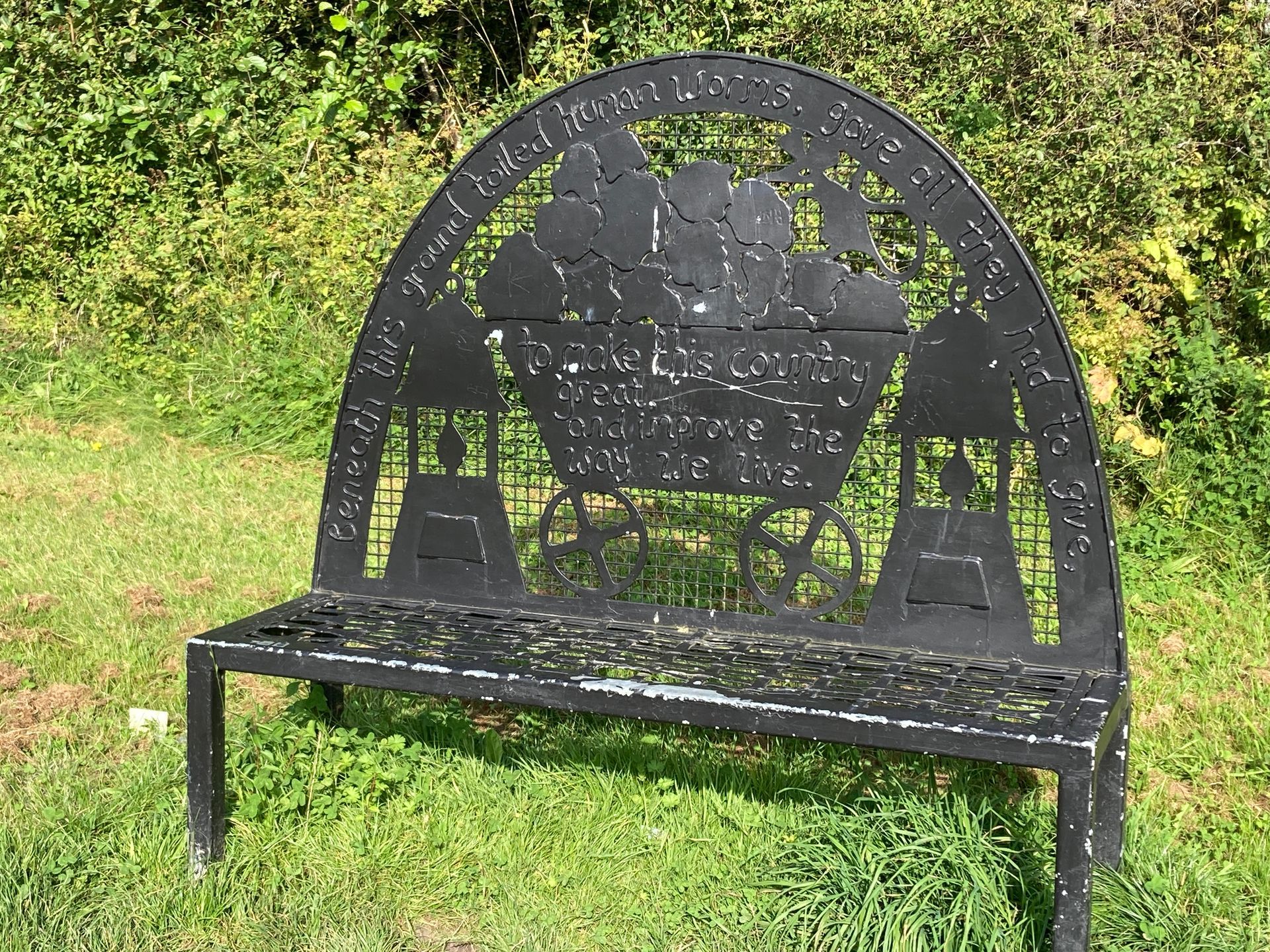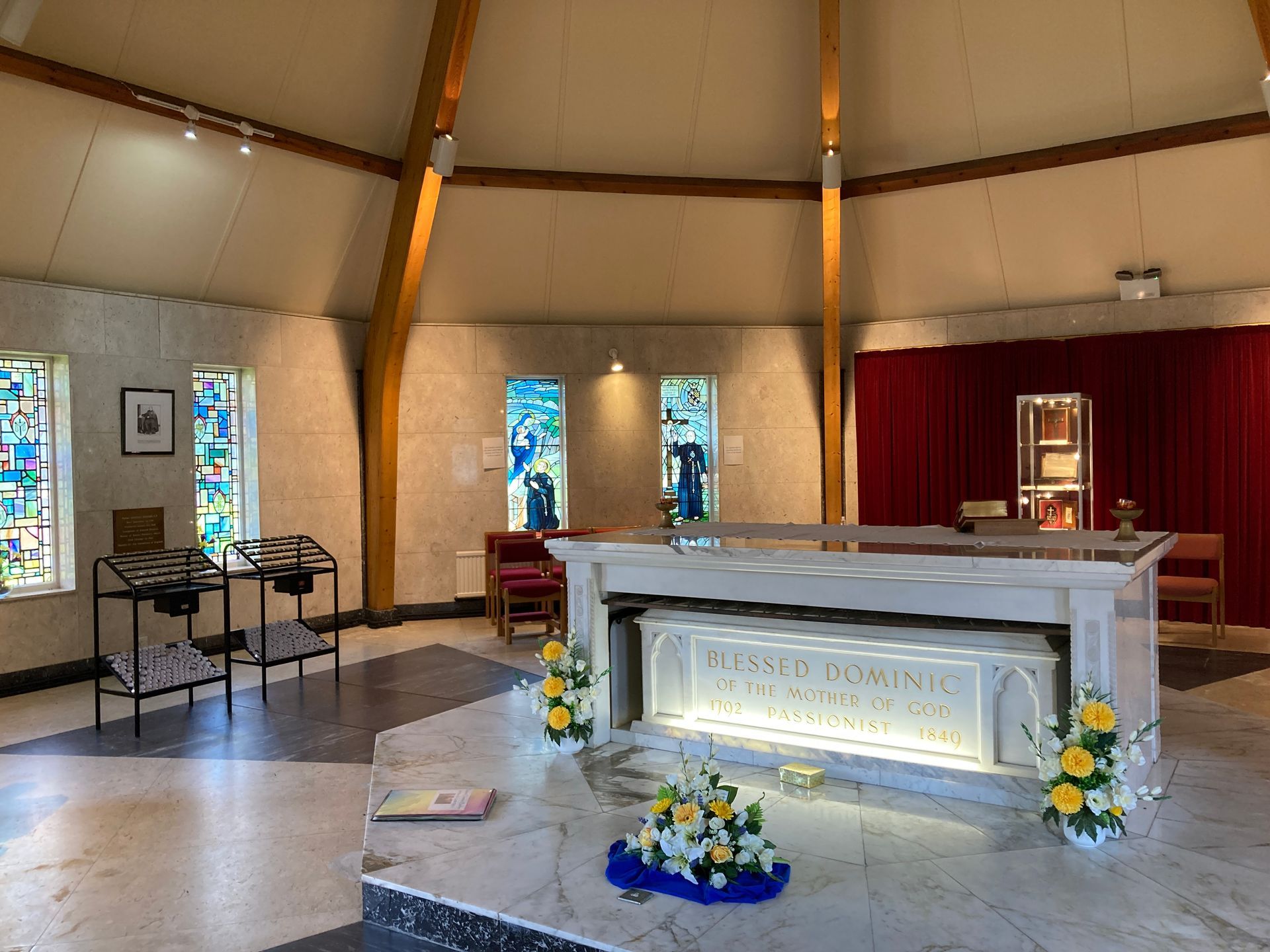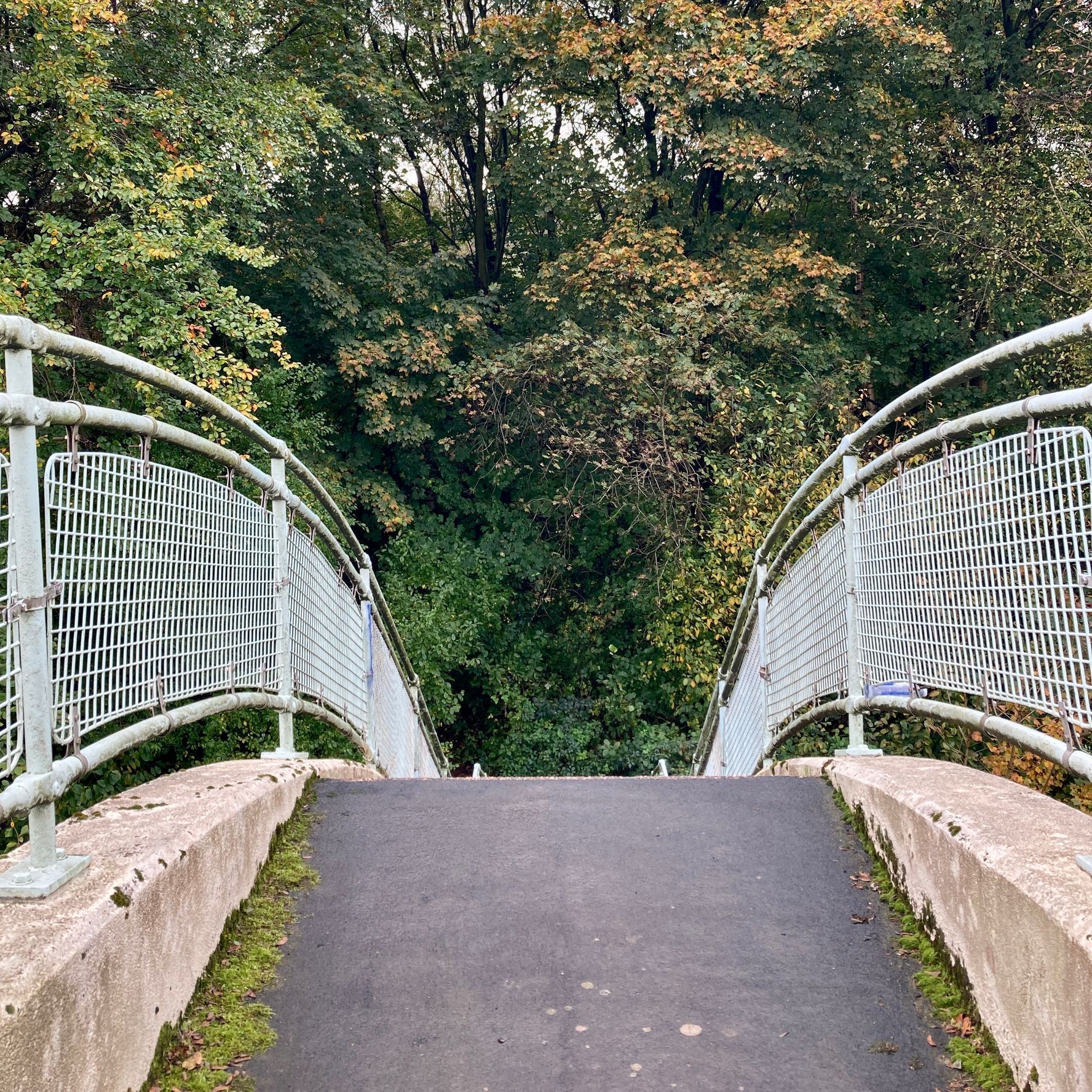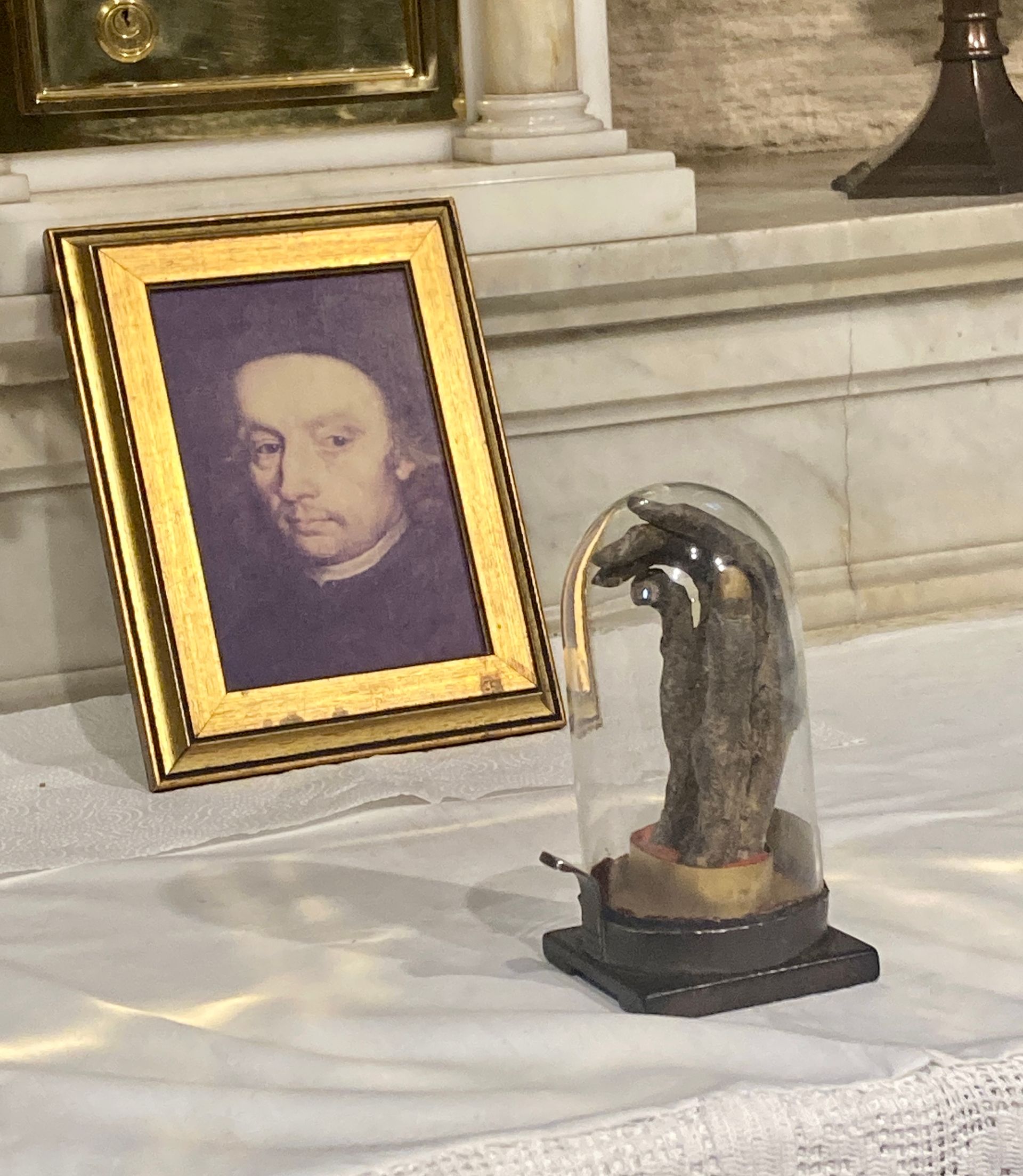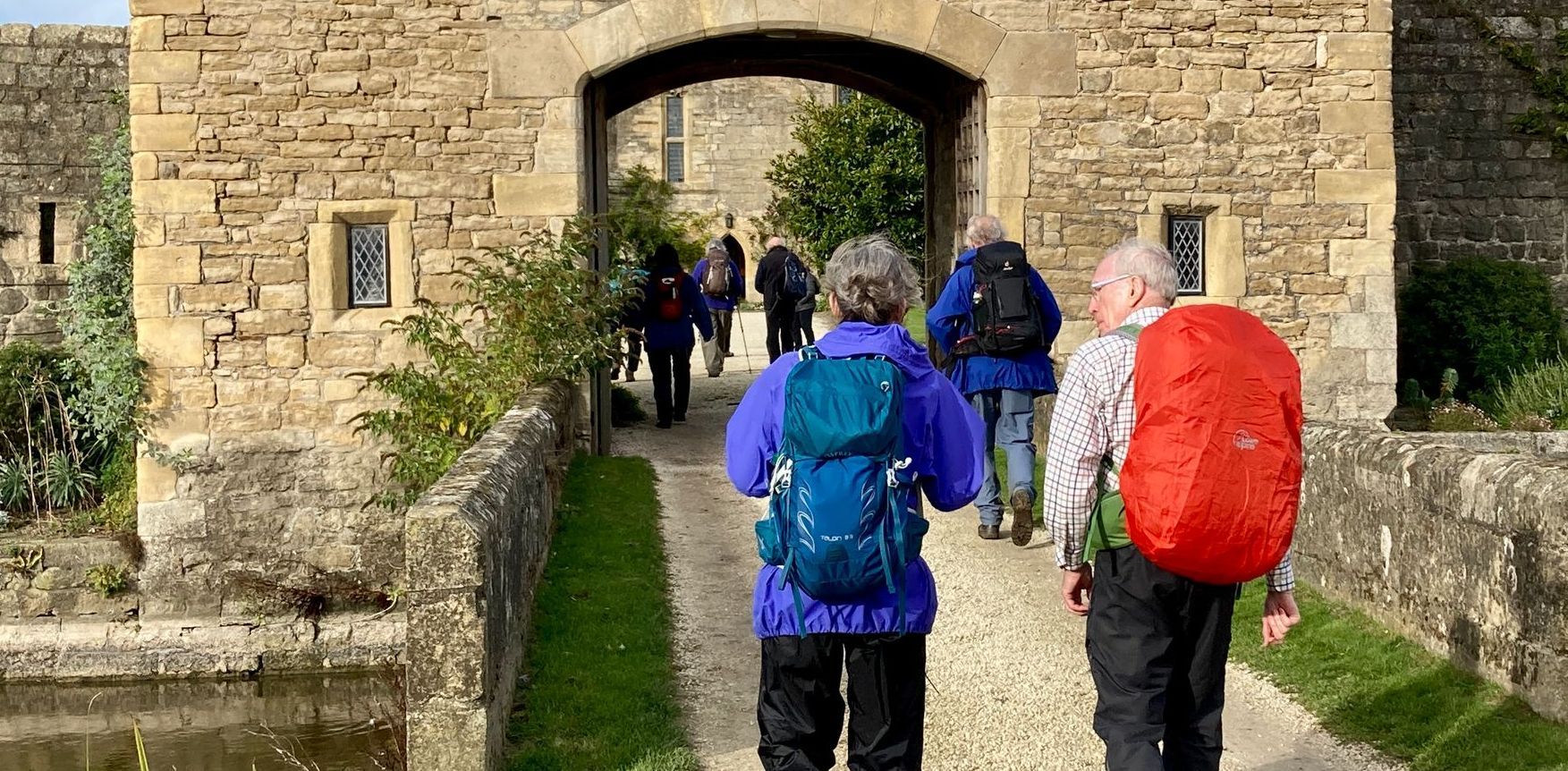The Way of Blessed Dominic Barberi & St Edmund Arrowsmith
A Pilgrim Way for the Archdiocese of Liverpool from the Metropolitan Cathedral of Christ the King in Liverpool to the Shrines of Blessed Dominic Barberi in St Helens and St Edmund Arrowsmith in Ashton-in-Makerfield
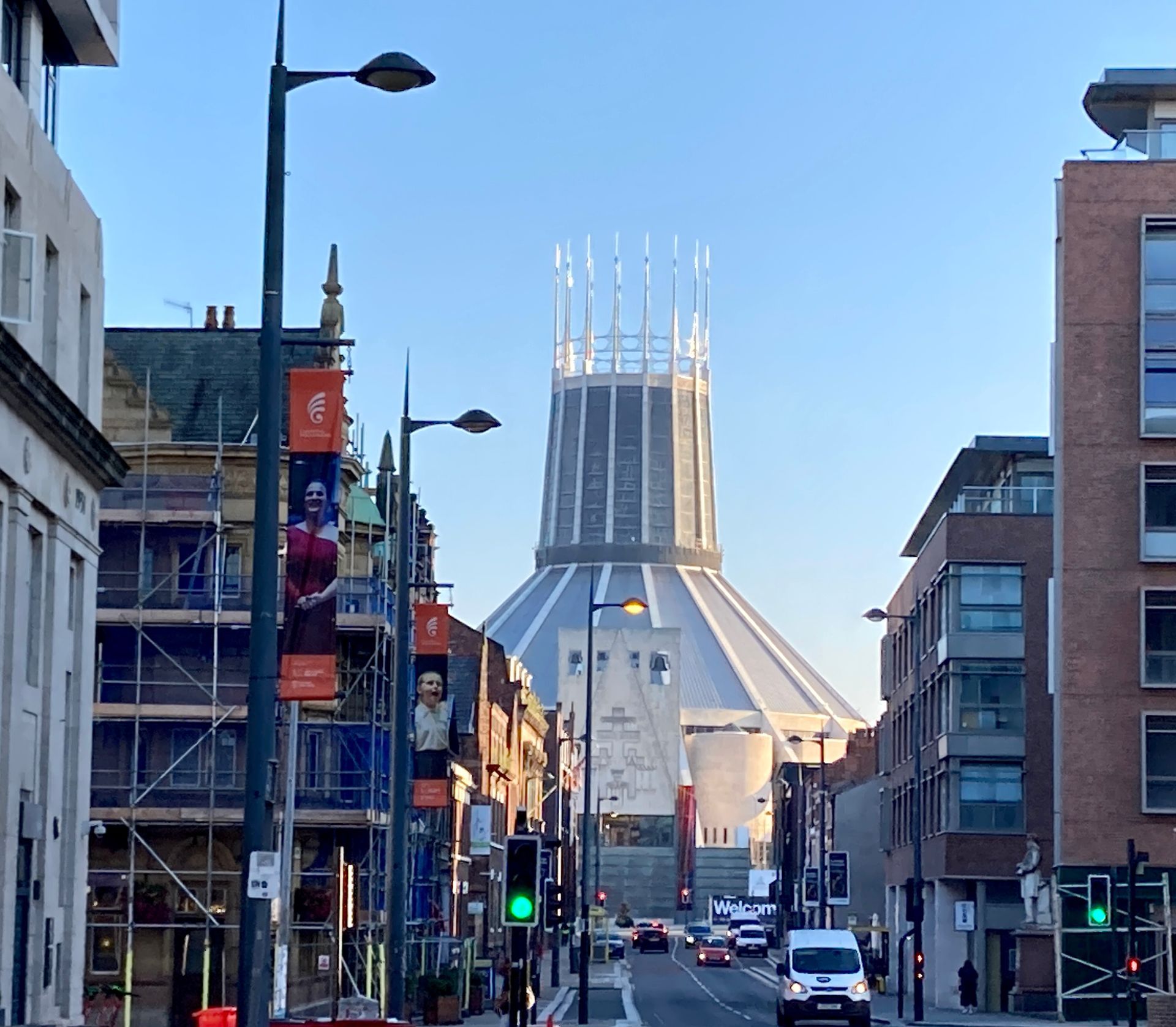
The Metropolitan Cathedral of Christ the King, or the 'Mersey Funnel"
About the route
Dominic Barberi (1792–1849) was an Italian Passionist priest who played an important part in the re-emergence of Catholicism in England. He was beatified in 1963. Edmund Arrowsmith (1585-1628) was martyred for being a priest and was canonised in 1970 as one of the Forty English Martyrs. You can view a short film about the life and example of St Edmund Arrowsmith below. Thanks to Canon John Gorman for permission to share this film.
The Way passes the Shrine of the Blessed Sacrament in central Liverpool, before reaching the waterfront. The route follows the River Mersey, then crosses the site of the Festival Gardens to reach the Church of St Charles Borromeo, St Michael's Hamlet. The path crosses Sefton Park to the Shrine of Our Lady of Perpetual Succour at Bishop Eton, and from there to Calderstones Botanic Garden to reach the Church of St Mary at Woolton, passing the Maryton Grange Carmel Monastery.
The Way joins the Liverpool Loop Line path then crosses farmland by lane and track to pass a Holy Well and reach the Church of the Holy Family at Cronton. The route crosses farmland to the Church of St Bartholomew at Rainhill. The Way traverses rewilded former collieries to the Shrine of Blessed Dominic Barberi. From there the Way passes through town and country to the Shrine of St Edmund Arrowsmith at Ashton-in-Makerfield.
You can find out more about the Way and download the GPX file by clicking on the LEARN MORE tab in the
interactive map below
Guidance
Using the tabs in this section you can find the information you need for your pilgrimage.
The Outer Way provides practical advice about the route.
The Inner Way describes the spiritual highlights.
Using the button below you can download details of the inner and outer ways and the walking guidance and maps.
Stages: route, food & drink, accommodation and public transport
1. Liverpool Metropolitan Cathedral to St Michael's Hamlet: 5.5 miles
The Cathedral can be reached by foot from Lime Street railway station and the coach station in Canning Place. The Way leads through the shopping centre, passing the Blessed Sacrament Shrine, then beside the River Mersey past the redeveloped docks. It crosses the former Festival Gardens and woodland to reach St Michael’s Hamlet and the Church of St Charles Borromeo. There is plenty of food, drink and accommodation in Liverpool City Centre. The local bus network can be accessed on Riverside Drive and on Aigburth Rd in St Michael’s Hamlet.
2. St Michael's Hamlet to Woolton: 4.7 miles
The Way crosses Sefton Park and then follows quiet suburban roads, passing the Church of St Anthony of Padua, to reach Calderstones Park. It passes near the Maryton Grange Carmel and then traverses a golf course to reach Woolton and the Church of St Mary. There is a café at Sefton Park Palm House and shops, restaurants and pubs on Allerton Rd, just north of the Way. There is a pub after the main road crossing before Woolton. There are pubs, restaurants and shops in Woolton and Airbnb accommodation nearby. The bus network can be accessed at Allerton and Woolton.
3. Woolton to Cronton: 6.8 miles
The route soon reaches a delightful former railway track and follows this to Halewood. After Haywood the Way follows quiet lanes and then tracks to reach Cronton. There are pubs in Halewood and Cronton. The bus network can be accessed at Halewood, Tarbock Green and Cronton. There is a railway station at Halewood.
4. Cronton to the Shrine of Blessed Dominic Barberi, Sutton, St Helens: 6.3 miles
From Cronton the Way follows tracks to Rainhill Stoops and then Sutton Manor. It then crosses rewilded former collieries and quiet countryside to reach the Shrine of the Blessed Dominic in St Helens. There is a Tesco at Rainhill Stoops and a pub with accommodation. There is a pub and café near St Helens Junction railway station and some Airbnb accommodation in the area. The bus network can be accessed at Cronton, Rainhill Stoops, Sutton Manor and Sutton. There is a railway station at St Helens Junction.
5. Sutton, St Helens to the Shrine of St Edmund Arrowsmith, Ashton-in-Makerfield: 6.8 miles
Sadly the next section is badly littered in place. If every pilgrim carried a litter picker and collected some we could improve the environment and gain many blessings!
The Way includes parks and woodlands and avoids main roads, but it is through a commercial and industrial landscape. There is a convenience store in a garage near the start of the section, pubs at the Broad Oak Rd roundabout and a pub and hotel at the roundabout on Piele Rd in Haydock. There are shops, pubs, cafes and accommodation in Ashton-in-Makerfield. The station in Ashton-in-Makerfield is at Bryn 1.2mi north of the Church. The Liverpool regional bus network can be accessed at Parr, Broad Oaks, Haydock and Ashton-in-Makerfield.
Public transport links
Trains:
https://www.nationalrail.co.uk/
Coaches:
https://www.nationalexpress.com/en
Buses:
Pilgrim people and places
The Metropolitan Cathedral of Christ the King, Liverpool
The Cathedral is recognised as one of the most important British buildings of the C20. The crypt, designed by Sir Edwin Lutyens, is all that remains of Archbishop Downey’s grandiose scheme to eclipse Liverpool’s Anglican Cathedral and rival St Peter’s in Rome. Work started in 1933 and continued steadily until 1941, when the builders were needed for urgent war work. The crypt was completed in 1958 but the original plans for the superstructure were unaffordable. A competition for a new design was held in 1959, which was won by Sir Frederick Gibberd. The Cathedral was completed in 1967. The interior is a single space, seating 2,000 people, with a ring of outer chapels between the buttresses. The sloping roof rises to a central funnel-shaped tower over the main altar filled with stained glass. The Cathedral was opened in May 1967, but the tight budget and revolutionary design led to major technical problems which were not resolved until 2003. Today the Cathedral is a stunning church, holding many fine pieces of modern British art.
Blessed Sacrament Shrine, Liverpool
The Congregation of the Blessed Sacrament is an apostolic group of men who assist the Church to form Christian communities centred on the Eucharist. In 1970 the Congregation made a Foundation of St. Augustine’s Oratory, Great Howard Street, Liverpool and started to search for a base in the city centre. A site was found in Clayton Square, and a shrine was inaugurated in November 1972. After 12 successful years the community relocated to Dawson Street. Today the Shrine is a centre for evangelisation, Eucharistic adoration, celebration of the sacraments and an oasis of peace in the heart of the city.
The Church of St Charles Borromeo, St Michael’s Hamlet
The parish of St Charles Borromeo was established in 1892. The dedication linked the resurgence of the Catholic Faith in England during the C19 with the Counter-Reformation in which St Charles Borromeo took such an energetic part. A cast iron church was constructed and was in use up to 1898 when it was taken by road and canal to Platt Bridge, Wigan where it was opened in 1899 as the Church of The Holy Family and served that parish until 1956. The replacement church in St Michael’s Hamlet was designed in Pugin & Pugin and built 1899-1900 of buff-coloured sandstone to serve the rapidly expanding Catholic population of the local suburbs. It is an impressive part of the local landscape.
The Church of St Anthony of Padua, Mossley Hill
The Church was founded by Franciscan Friars from the Province of the Immaculate Conception in Syracuse, New York. Land was purchased and the Church was built in 1931-2 following the basilica form of the New York mother church, except that it has only one tower. It is built of brown brick with sandstone dressings and a red tiled roof. There are murals by the Italian artist Lerario above the main altar, sanctuary and side altars.
Maryton Grange Carmel Monastery
Maryton Grange Carmel is an enclosed community of 26 Discalced Carmelite Nuns of the Blessed Virgin Mary of Mount Carmel who live a life of prayer for the Church and for the world. Around 2005 the Carmelite community in West Derby, Liverpool, were considering relocating. When the Maryton Grange site was found, the sisters asked if any community would like to explore the possibility of coming together. As a result, Golders Green Carmel and then Upholland Carmel came together to form a new community under the patronage of St Joseph. Work on the new monastery started in 2011 and was completed in 2013. The community is enclosed and not open to the public.
The Church of St Mary, Woolton
The Benedictines provided chaplains for many years to the recusant Molyneux family of Woolton Hall. In 1765 the family gave them funds to build a priory and church on Watergate Lane. The present red sandstone parish church was erected in 1859-60, a presbytery was added in 1864, and school in 1869. In 1928 the Benedictines left after 2 centuries. In 1982 St Benet’s Priory was demolished and the parish school was built on the site. Since 2011 the Redemptorist Community at Bishop Eton have had responsibility for the parish.
St Anne’s Well, Cronton
The custom of venerating springs and wells as sacred sites is known to have characterised pre-Christian religions in Britain. The Christian cult of holy wells may have started in the C6 and continued until it was condemned at the Reformation (c.1540). Local reverence and customs often continued, sometimes to the present day. St Anne's Well, is a well-preserved example of a shallow square basin with steps leading down to the bottom. The type is medieval and there are three examples in the region. It is constructed of local sandstone and was associated with a burial ground.
The Church of St Bartholomew, Rainhill
The Church was built at the expense of Bartholomew Bretherton, the Catholic owner of a successful coaching company. The Church was built in 1838-40, followed by school and convent buildings, all paid for by Bretherton. The Church is a handsome Neoclassical building, with an Italianate campanile and a splendid interior.
The Church of St Anne & Blessed Dominic, Sutton, St Helens
The parish originated in 1849 and was in the care of Passionist priests based in an adjacent monastery until 2004. The old church and monastery were demolished due to mining subsidence and much of the site sold to build a new parish centre.
The new polygonal Church dates from 1973 and is the burial place and shrine to three notable figures from the Catholic ‘Second Spring’: Blessed Dominic Barberi (1792-1849), who established the Passionist congregation in England and was instrumental in the conversion of John Henry Newman; the Venerable George (Ignatius) Spencer (1799-1864), Passionist priest and the convert son of the second Earl Spencer and the Venerable Elizabeth Prout (1820-64), founder of the Sisters of the Cross & Passion.
The Church of St Oswald & St Edmund Arrowsmith, Ashton-in-Makerfield
The first Catholic chapel was built in 1822, and the cast-iron entrance gates to the churchyard and the presbytery date from that time. The present Church was built on the same site and was opened in 1930. The design was inspired by the Romanesque churches of southern France. It is embellished by fine stone carving and Arts & Crafts stained glass. It is said that the church was built using local labour to provide relief during the Depression. Lord Joe Gormley, former President of the NUM who grew up nearby, is commemorated in the churchyard.
St Oswald c 604–642 was King of Northumbria and did much to spread the faith throughout his Kingdom. Brian Arrowsmith (1585-1628) left England at age 21 to attend the English College at Douai, Belgium, where he was confirmed, taking the name Edmund. In 1613 he returned to Lancashire as a priest. He was arrested about 10 years after his return and imprisoned but was freed when King James I pardoned all Catholic priests. In 1623 he joined the Society of Jesus. In 1628 he was captured by priest-hunters, convicted of being a priest, then a crime of high treason, and a few days later, hanged, disembowelled and quartered. He is one of the 40 English Martyrs canonised in 1970. After his execution his right hand was cut off and came into the care of a local recusant family. It is preserved in a silver casket and has been venerated in the Church for over two centuries.
ABOUT THE ARCHDIOCESE OF LIVERPOOL
The Catholic Archdiocese of Liverpool was established as one of thirteen new dioceses in 1850 when the Catholic hierarchy of England & Wales was re-established. It covers an area of 1,165 km² of the west of the County of Lancashire south of the Ribble River, parts of Merseyside, Cheshire, Greater Manchester, the historic Hundreds of West Derby and Leyland and the Isle of Man and parts of Yorkshire.
